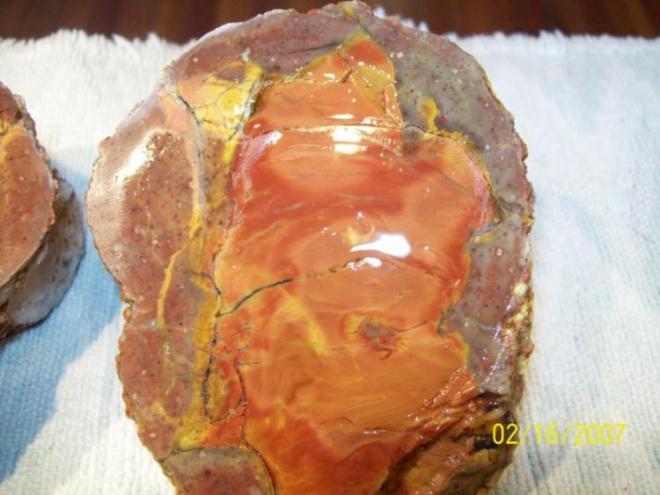Post by 1dave on Mar 27, 2014 11:37:27 GMT -5
An Extension of Geology For Rockhounds.
There are four varieties of Geodes, Five if you count somewhat similar VUGS.
1. Sedimentary voids from some mineral being dissolved, the void later being filled with agate and crystals. Nearby hot springs present or past is a factor. Without them you have just dead rocks. The hillside where the spring was will be littered with agate nodules, the surrounding area, nothing.
They may turn up in unexpected locations, and usually have an irregular shaped exterior.
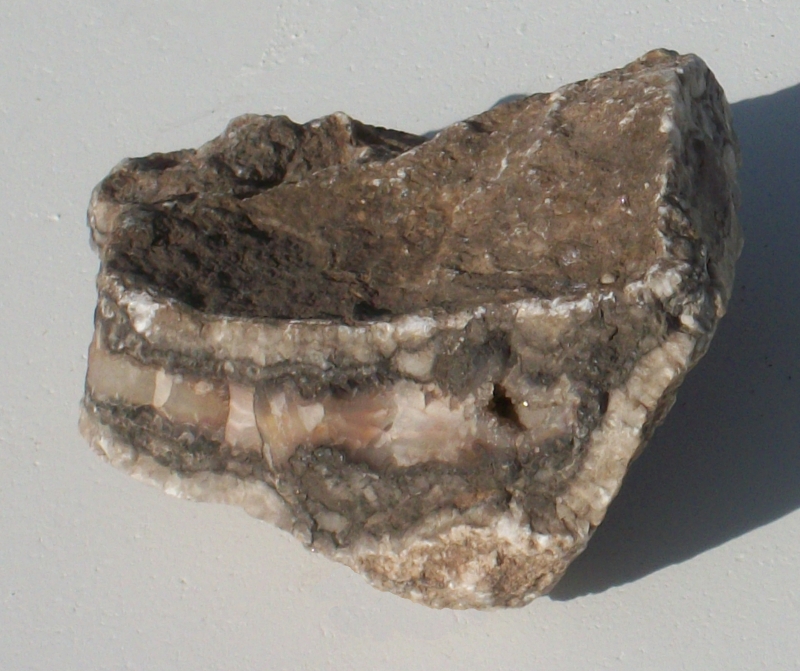
2. a "MUST SEE" at: Sedimentary Geodes from a Mississippian extinction event. They are usually fairly spherical, found in Mississippian age mud and waterway bottom soils from Montana to Georgia.
My best guess is a volcanic eruption melted huge amounts of limestone releasing vast heavy clouds of CO2 gas that displaced oxygen in the sea. The creatures and their scavengers died, the bodies bloated, then agate and amazing crystals filled the cavities.

3. Igneous Bubble Geodes scientifically known as "Amygdaloids" because some are almond or teardrop shaped. They are formed in fluid basalt and andesite flows that overrun some bedrock that releases gas on heating.
Download Screen Optimized (7Mb) PDF:
Milford Map
ngmdb.usgs.gov/Prodesc/proddesc_9991.htm
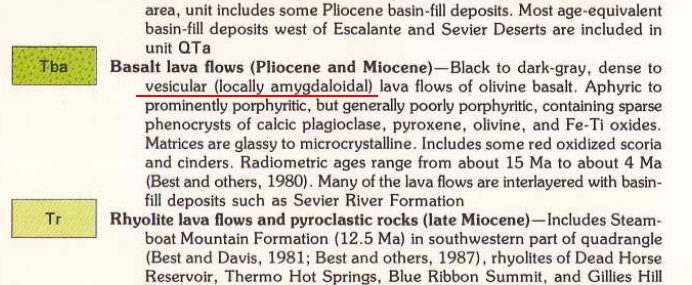
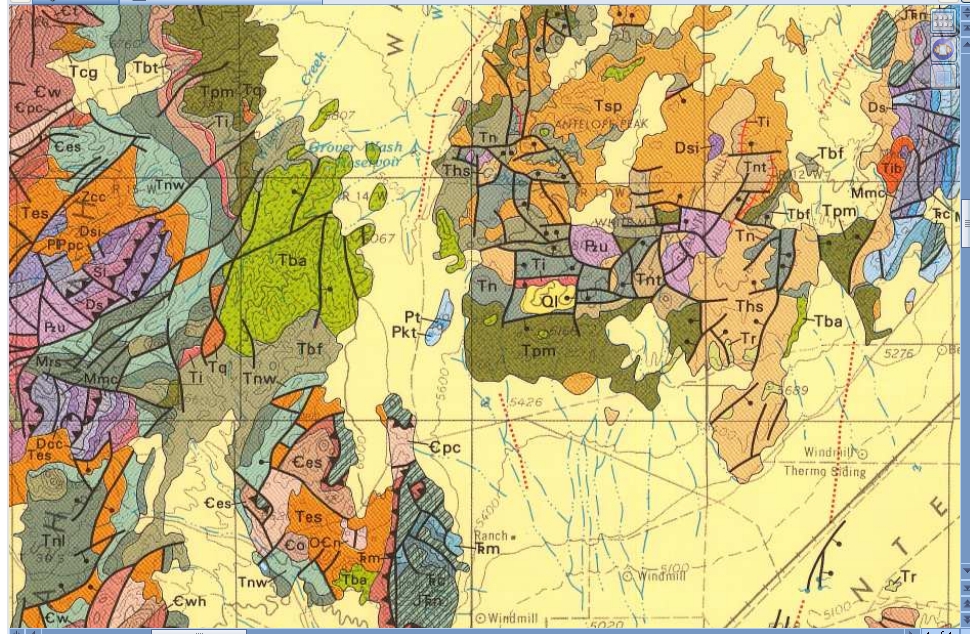
Some geodes have a smooth exterior, but often they were surrounded with a frothy foam that gave them a hammered looking exterior.
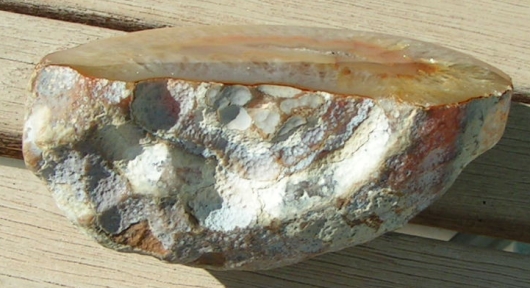
Amazing are the "Cathedral Geodes" from Brazil that may rise to 7-8 feet tall. Notice how the bottoms were sucked up as the gas cooled.
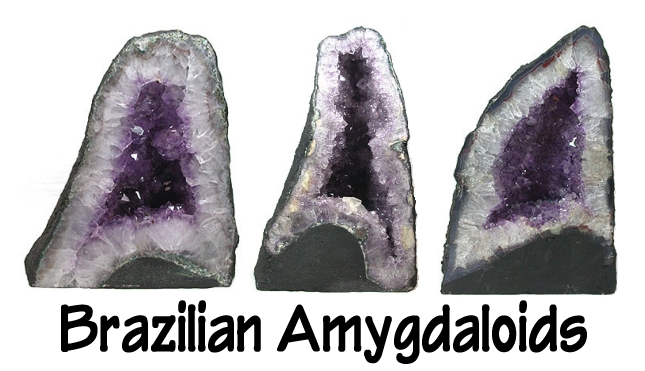
The bubbles usually remained empty for millions of years until mineral laden fluids began percolating through them. Fill tubes where the materials entered and exited are usually visible.
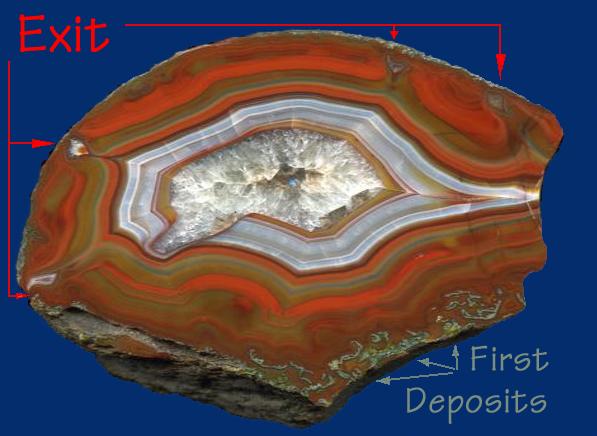
Andesite has a courser crystal structure than basalt, so bubbles in it are much more irregular, but with a more varied selection of mineral salts, often has far more dramatic fill sequences!

Andesite
In a category all by themselves are the chalcedony worm exteriors of Ocos from from Três Pinheiros, Fountoura Xavier, Rio Grande do Sul, Brazil.

Ocos
4. Thundereggs scientifically known as "Lithophasae." Look on geology maps for that word or Spheroids.
Geologic map and sections of the area between Hamlin Valley and Escalante Desert, Iron County, Utah
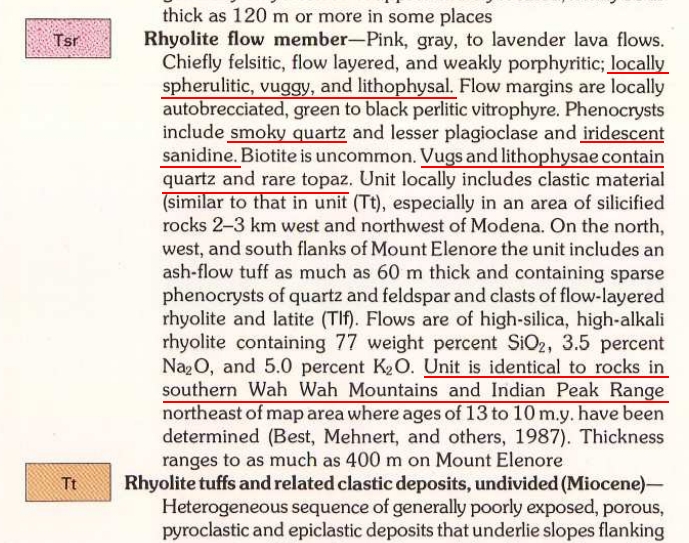
Just find the pink "Tsr" locations on the map and check them out!
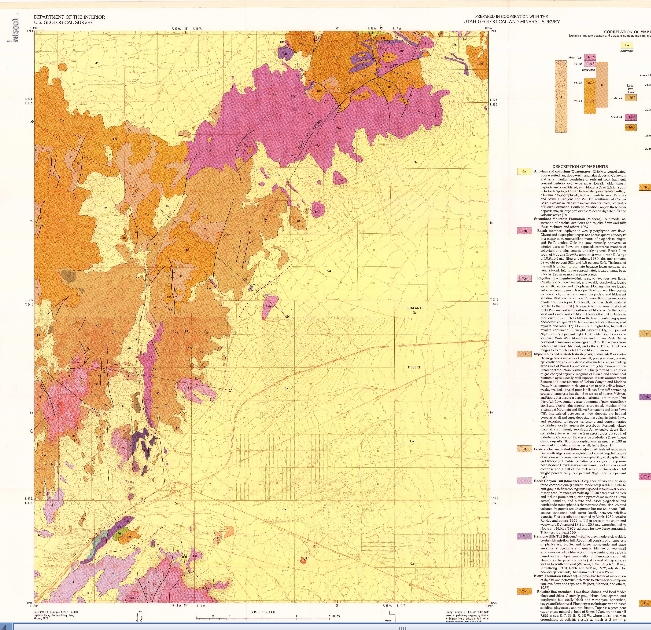
They 0occur only in high silica content obsidian, pitchstone, rhyolite flows, and Welded Ash Flow Tuffs. But not just any old flow. The pressure and water content had to be just right. About 1-3%. High silica flows are very viscus. They tend to dome up rather than flow. Add a little water and it is like adding marbles. Glide planes come into being where the water is, allowing dry layers to slip along on them.
That allows silica molecules to come in contact with each other that normally would be impossible. Even down in the magma chamber and vent throat, silica needles gather together like dandelion puffballs - Spheroids.
Strike up the band. The "Endothermic/Exothermic Dance" is in full swing.
Crystallization generates heat. If the minerals are present to form feldspar, that activity resumes and cristobalite ceases. A layer of perthite feldspar coats the spheroids. Cooling resumes and so does another layer of cristobalite needles as the spheroids get larger. The cycles may continue for thousands or millions of times. Finally the flow cools enough for the matrix to contract and allow the trapped water to flash into steam, forcing the spheroids to blossom into Thundereggs.
A "Siamese" spheroid "just barely thunderegg" in obsidian.
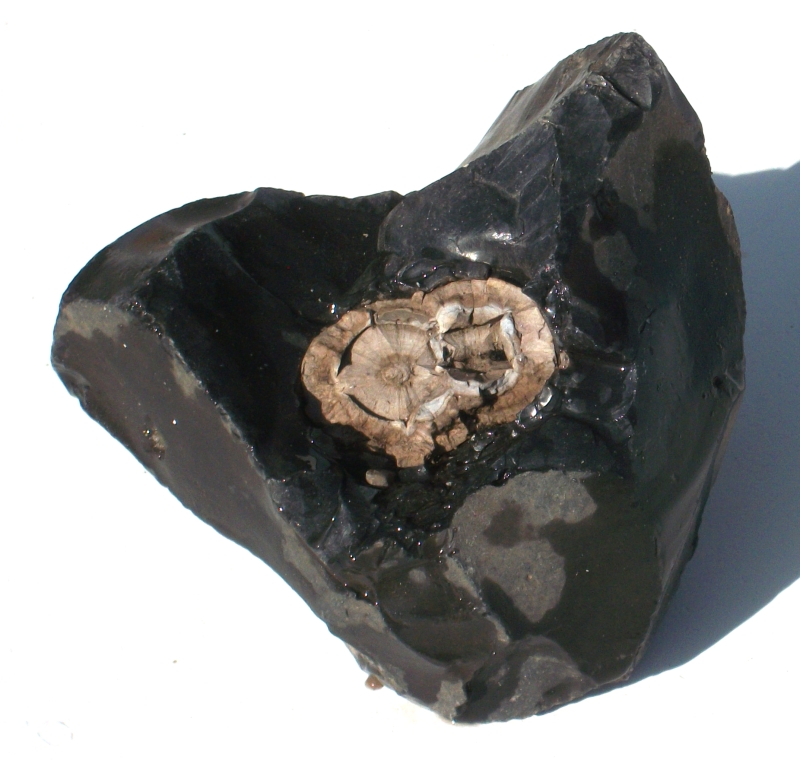
When you get into an area with lots of little spheroids and "snowflakes" you are in thunderegg country. This is from the Baker egg Mine in New Mexico.
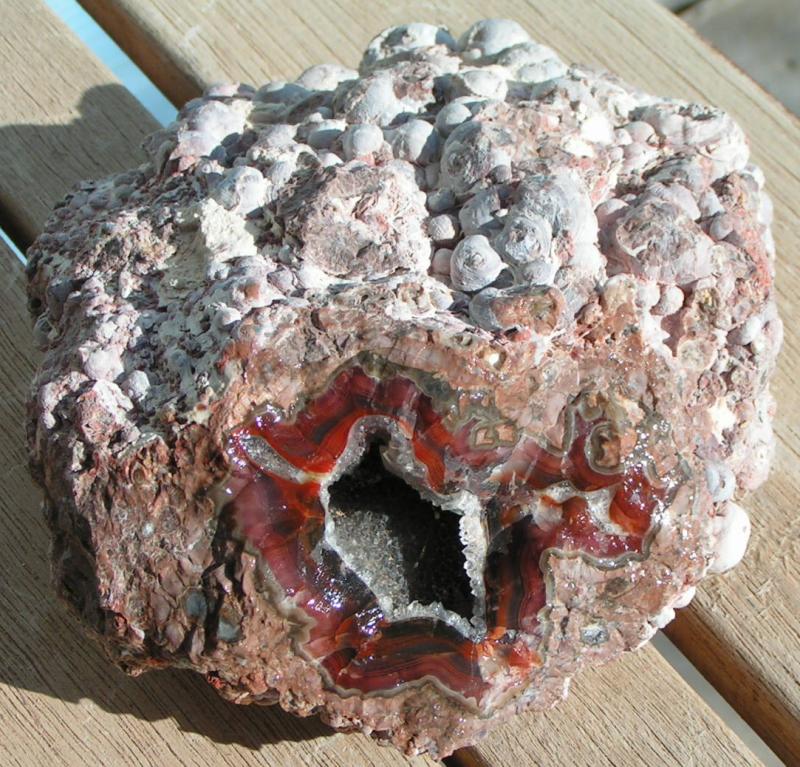
When not coated with tiny eggs, you can see the suture lines where the spheroids were forced apart by steam.
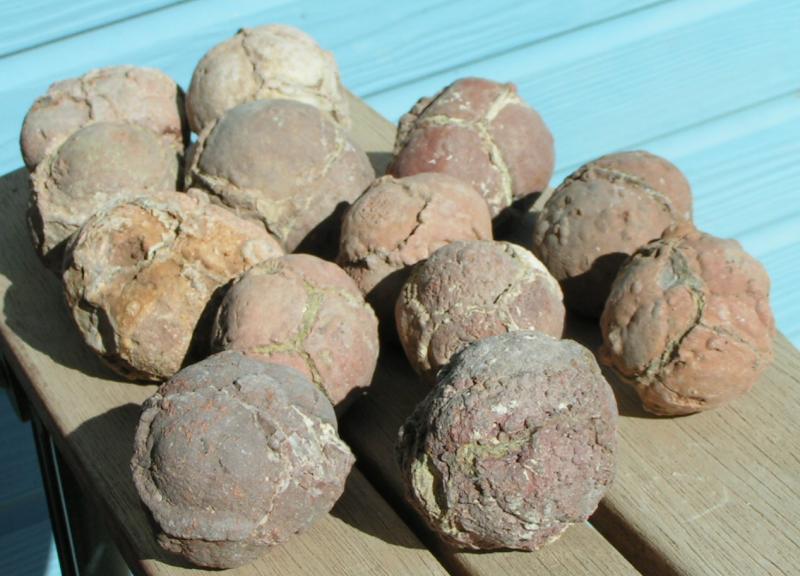
The largest plate will still be attached to the center. a judicious cut can reveal how it expanded.
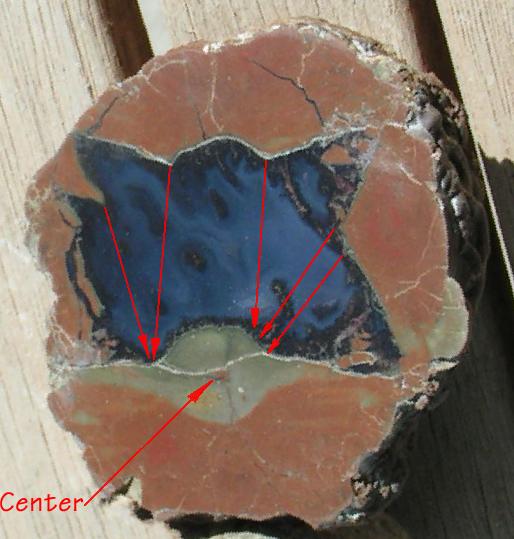
"Mexican Coconuts" formed the same way, but in carbonate melts that open to the very center. They have lots of calcite crystals throughout the shells and sometimes inside.
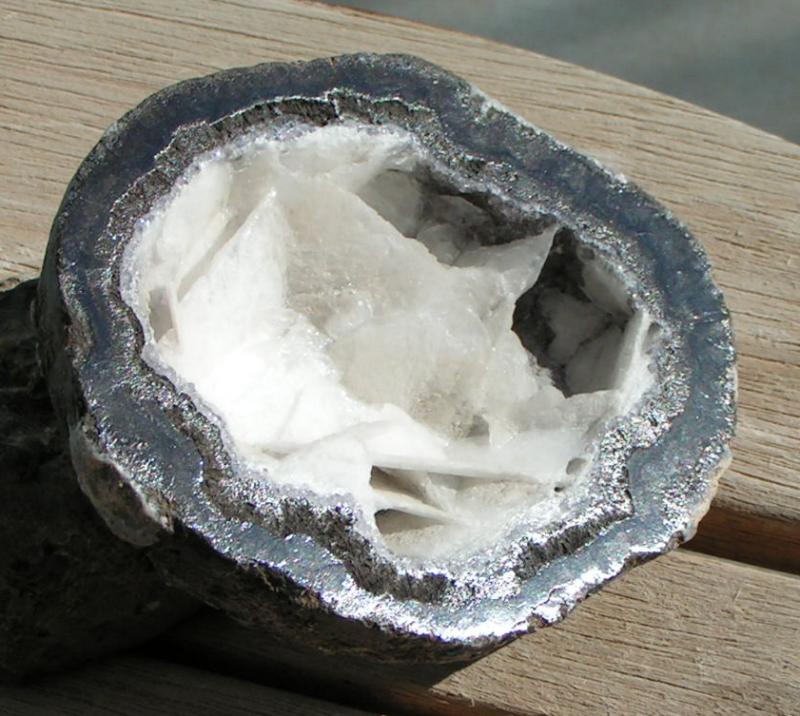
Mexican Coconut with Calcite plates
5. Vugs are formed in Pegmatites, granite masses that have been re-injected and enriched from time to time with new surges of gas and magma. This produces pockets known as vugs where large crystals can form. If you find the word Pegmatite on a geologic map in your area, it is definitely worth your time exploring. Topaz, tourmaline, all kinds of beryls . . . the good stuff!
Happy Hunting!
There are four varieties of Geodes, Five if you count somewhat similar VUGS.
1. Sedimentary voids from some mineral being dissolved, the void later being filled with agate and crystals. Nearby hot springs present or past is a factor. Without them you have just dead rocks. The hillside where the spring was will be littered with agate nodules, the surrounding area, nothing.
They may turn up in unexpected locations, and usually have an irregular shaped exterior.

2. a "MUST SEE" at: Sedimentary Geodes from a Mississippian extinction event. They are usually fairly spherical, found in Mississippian age mud and waterway bottom soils from Montana to Georgia.
My best guess is a volcanic eruption melted huge amounts of limestone releasing vast heavy clouds of CO2 gas that displaced oxygen in the sea. The creatures and their scavengers died, the bodies bloated, then agate and amazing crystals filled the cavities.

3. Igneous Bubble Geodes scientifically known as "Amygdaloids" because some are almond or teardrop shaped. They are formed in fluid basalt and andesite flows that overrun some bedrock that releases gas on heating.
Download Screen Optimized (7Mb) PDF:
Milford Map
ngmdb.usgs.gov/Prodesc/proddesc_9991.htm
Some geodes have a smooth exterior, but often they were surrounded with a frothy foam that gave them a hammered looking exterior.

Amazing are the "Cathedral Geodes" from Brazil that may rise to 7-8 feet tall. Notice how the bottoms were sucked up as the gas cooled.

The bubbles usually remained empty for millions of years until mineral laden fluids began percolating through them. Fill tubes where the materials entered and exited are usually visible.

Andesite has a courser crystal structure than basalt, so bubbles in it are much more irregular, but with a more varied selection of mineral salts, often has far more dramatic fill sequences!

Andesite
In a category all by themselves are the chalcedony worm exteriors of Ocos from from Três Pinheiros, Fountoura Xavier, Rio Grande do Sul, Brazil.

Ocos
4. Thundereggs scientifically known as "Lithophasae." Look on geology maps for that word or Spheroids.
Geologic map and sections of the area between Hamlin Valley and Escalante Desert, Iron County, Utah

Just find the pink "Tsr" locations on the map and check them out!

They 0occur only in high silica content obsidian, pitchstone, rhyolite flows, and Welded Ash Flow Tuffs. But not just any old flow. The pressure and water content had to be just right. About 1-3%. High silica flows are very viscus. They tend to dome up rather than flow. Add a little water and it is like adding marbles. Glide planes come into being where the water is, allowing dry layers to slip along on them.
That allows silica molecules to come in contact with each other that normally would be impossible. Even down in the magma chamber and vent throat, silica needles gather together like dandelion puffballs - Spheroids.
Strike up the band. The "Endothermic/Exothermic Dance" is in full swing.
Crystallization generates heat. If the minerals are present to form feldspar, that activity resumes and cristobalite ceases. A layer of perthite feldspar coats the spheroids. Cooling resumes and so does another layer of cristobalite needles as the spheroids get larger. The cycles may continue for thousands or millions of times. Finally the flow cools enough for the matrix to contract and allow the trapped water to flash into steam, forcing the spheroids to blossom into Thundereggs.
A "Siamese" spheroid "just barely thunderegg" in obsidian.

When you get into an area with lots of little spheroids and "snowflakes" you are in thunderegg country. This is from the Baker egg Mine in New Mexico.

When not coated with tiny eggs, you can see the suture lines where the spheroids were forced apart by steam.

The largest plate will still be attached to the center. a judicious cut can reveal how it expanded.

"Mexican Coconuts" formed the same way, but in carbonate melts that open to the very center. They have lots of calcite crystals throughout the shells and sometimes inside.
Mexican Coconut with Calcite plates
5. Vugs are formed in Pegmatites, granite masses that have been re-injected and enriched from time to time with new surges of gas and magma. This produces pockets known as vugs where large crystals can form. If you find the word Pegmatite on a geologic map in your area, it is definitely worth your time exploring. Topaz, tourmaline, all kinds of beryls . . . the good stuff!
Happy Hunting!



